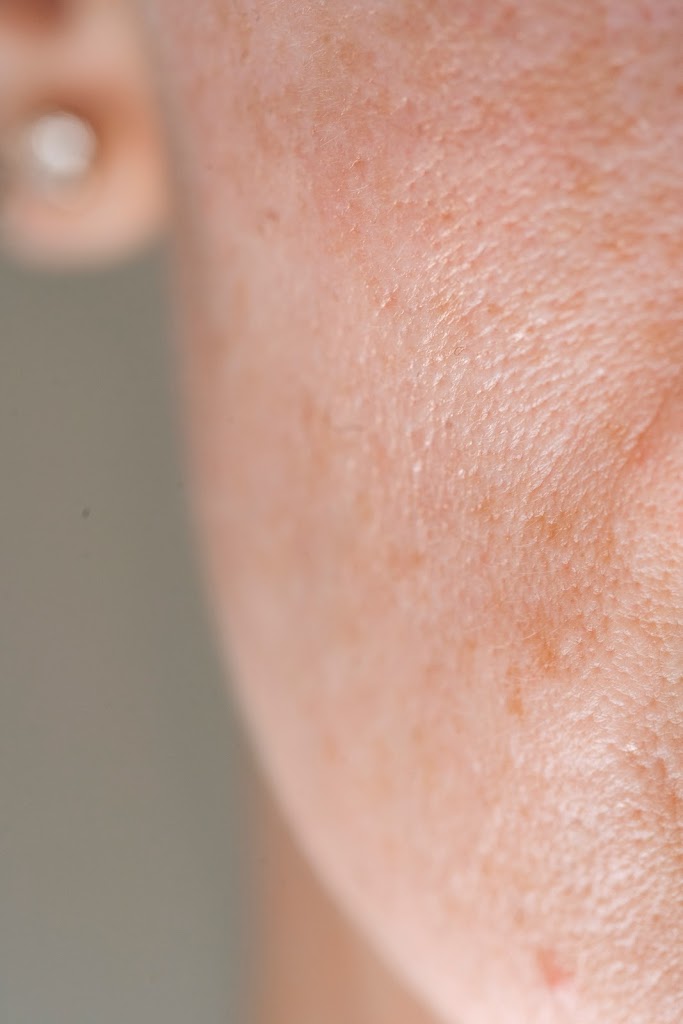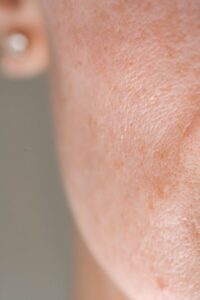Over Exfoliate Meaning
Over-exfoliation of the skin occurs when you excessively and aggressively remove the outer layer of your skin through various exfoliation methods. This can lead to a class of skin issues. It is typically identified by dryness, redness, irritation, sensitivity, peeling, and sometimes even breakouts. Over-exfoliation can compromise the skin’s natural barrier, making it more susceptible to damage from environmental factors and less able to retain moisture.
Exfoliation is an essential part of skin care to remove dead skin cells and promote skin renewal. However, too much exfoliation with harsh products can disrupt the skin’s balance and cause problems. It’s important to exfoliate in moderation and choose products and methods that are appropriate for your skin type and condition, Don’t over-exfoliate.
Signs of Over Exfoliation
Some signs of over-exfoliated skin are-
- Redness
- Dryness
- Irritations
- Peeling
- Burning or Stinging
- Increased Breakouts
- Tightness
- Hyperpigmentations
- Increased sensitivity to other products
- Increased sun sensitivity
- Rough skin texture
Ways to Avoid It
- Understand your skin type and its specific needs. Oily, combination, dry, and sensitive skin all require different approaches to exfoliation.
- Select exfoliating products that are suitable for your skin type. There are two main types of exfoliants:
- Physical Exfoliants: These contain small particles of sugar, and walnuts to physically scrub away dead skin cells. Use gentle, with small particles, non-abrasive products to avoid damaging your skin.
- Chemical Exfoliants: These use acids (like alpha hydroxy acids – AHAs or beta hydroxy acids – BHAs) to dissolve dead skin cells. Start with a lower concentration to avoid skin irritations and sensitivity. Establish a regular exfoliation schedule that aligns with your skin type and the product you’re using. Typically, 1-2 times a week is sufficient. No more than twice.
- Before using a new exfoliant, do a patch test on a small area of your skin to ensure you don’t have an adverse reaction.
- Exfoliating makes your skin more vulnerable to UV damage. Choose the right sunscreen. Always apply a broad-spectrum, mineral, water-resistant formulated sunscreen with SPF 50 or higher, especially if it’s during the daytime, each and every day. Also, reapply sunscreen every 2 hours to get your sunscreen worked effectively.
- Be cautious when using multiple exfoliating products in your skincare routine. Combining physical and chemical exfoliants or using products with high concentrations of active ingredients can increase the risk of over-exfoliation.
- Pay attention to how your skin reacts to exfoliation. If you notice redness, irritation, burning, or excessive dryness, cut back on exfoliation or take a break until your skin recovers.
- After exfoliating, apply 2% hyaluronic acid and a ceramide base moisturizer to help restore your skin’s natural barrier and maintain hydration.
- Whether you’re using physical or chemical exfoliants, be gentle when applying them. Avoid excessive pressure or rubbing, as this can damage the skin. Follow the instructions provided on the particular product you are using.
- Do not apply chemical exfoliants near the eye area or eyelids & under the eyes.
- Remember less is often more when it comes to exfoliation.


Leave a Reply